The
Phonograph and Its Future
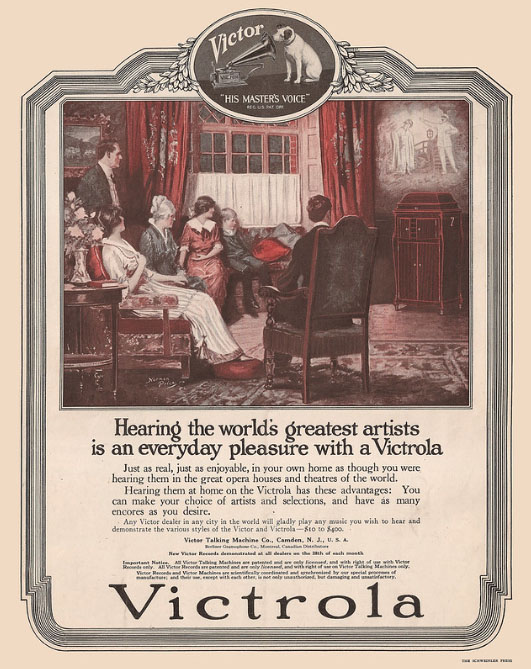
Probability:
Music
.
Music. -- The
phonograph will undoubtedly be liberally devoted to music. A song
sung on the phonograph is reproduced with marvelous accuracy and power.
Thus a friend may in a morning-call sing us a song which shall delight
an evening company, etc. As a musical teacher it will be used to enable
one to master a new air, the child to form its first songs, or to
sing him to sleep.
In April 1878, less than five months
after Edison had completed his Phonograph, a hint of the the phonograph's
musical future occurred when the French opera star Marie Rôze visited
Washington, D.C. in April 1878 and tried out the phonograph. An engraving
of Rôze recording on Edison tinfoil Phonograph appeared on the cover
of Frank Leslie's Illustrated News, April 20, 1878.
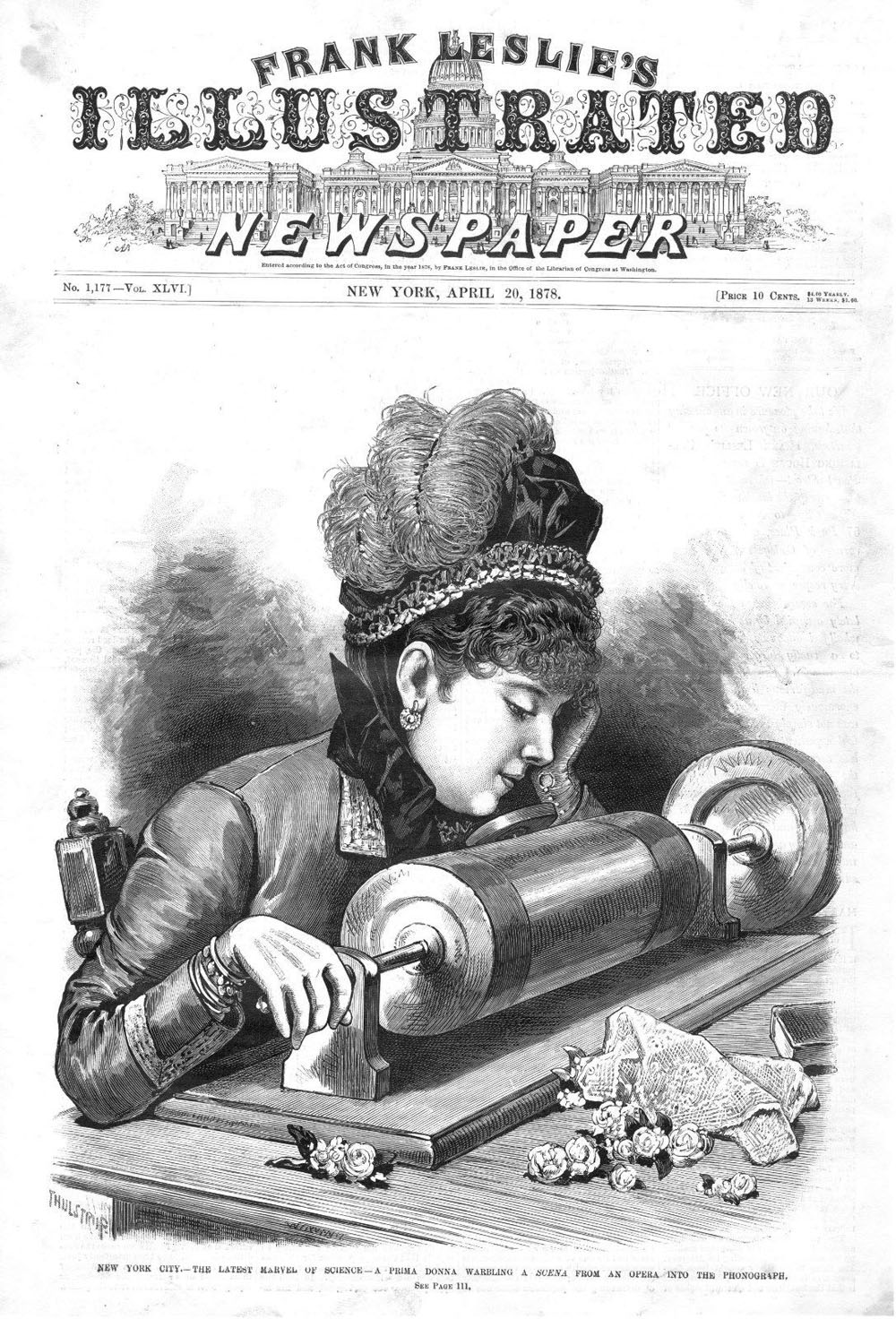
Commercial success was still over a
decade away but music and "the greatest artists of the world"
would ultimately redefine the phonograph as the definitive home entertainer.
Edison’s “Perfected” Phonograph of 1888
and improvements by the American Graphophone Company in 1889 made
the first ‘jukebox’ possible. The commercial success of jukeboxes
in public places was a turning point for popularizing the phonograph
as an entertainment device. Its instrument solos, band tunes, songs,
recitations, whistling specialties, and other entertainment routines
surprised some in the phonograph industry with its popularity and
profitability and even concerned some that music and entertainment
would be distractions from its true calling as a business machine.

Automatic Phonograph -
The Phonogram, February 1891
The February 1891 edition of The Phonogram
in an article titled "The Real Mission of the Phonograph"
expressed on page one that placing coin-in-the-slots in public places
was not the "genuine and legitimate use of the phonograph."
It was conceded that coin-in-the-slots were proving profitable, nevertheless,
the phonograph needed to be 'regarded as something more than the toy
and plaything of the women and children."

The Phonogram, March
1892
The phonograph's real mission, because
of coin-in-the-slot phonographs, "is disparaged and humiliated
by being placed side by side with the nickel-in-the-slot weight machines,
and every other speculative attraction of a circus show or a bar room,
in order that it may turn an honest penny."
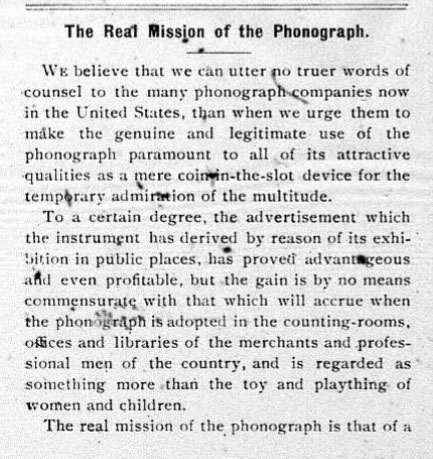
The Phonogram, February
1891
Nevertheless, coin-in-the-slots remained
popular in the 1890's and recordings of music and entertainment were
supplied by an new industry of record makers for the automatic phonographs
to be heard in public places, and soon for the home.
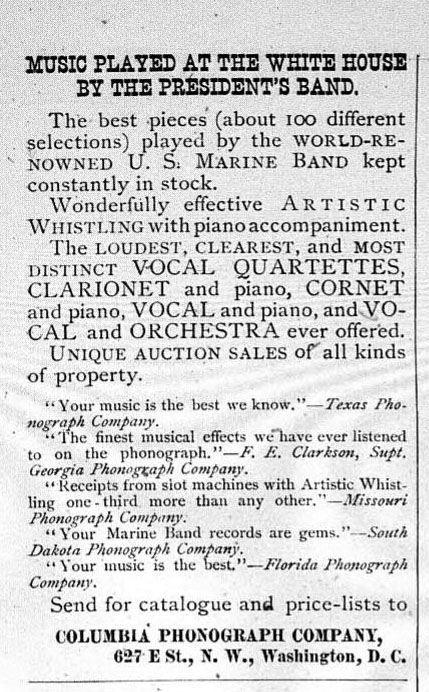
Columbia Phonograph advertisement
for records. The Phonogram, February 1891
When technical improvements were made
and after some industry consolidation took place following the bankruptcy
of Lippincott's North American Phonograph Company the phonograph,
as a consumer product, was ready to deliver music and unlimited entertainment
to the general public.
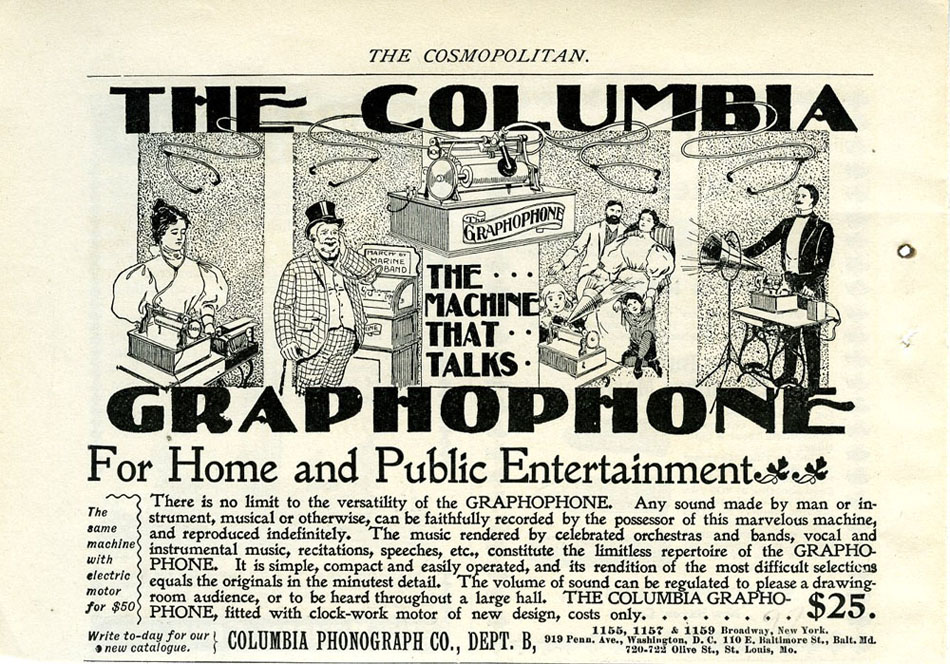
"no limit to the versatility of
the GRAPHOPHONE" - the four competing uses for the phonograph
in the 1890's: Business, Coin-in-the-slot, Home Entertainment and
Concert/Exhibitions. The Cosmopolitan, 1897

"Marveous,
yet so simple..." with the most enchanting selections..."
Munsey's magazine, 1896
.
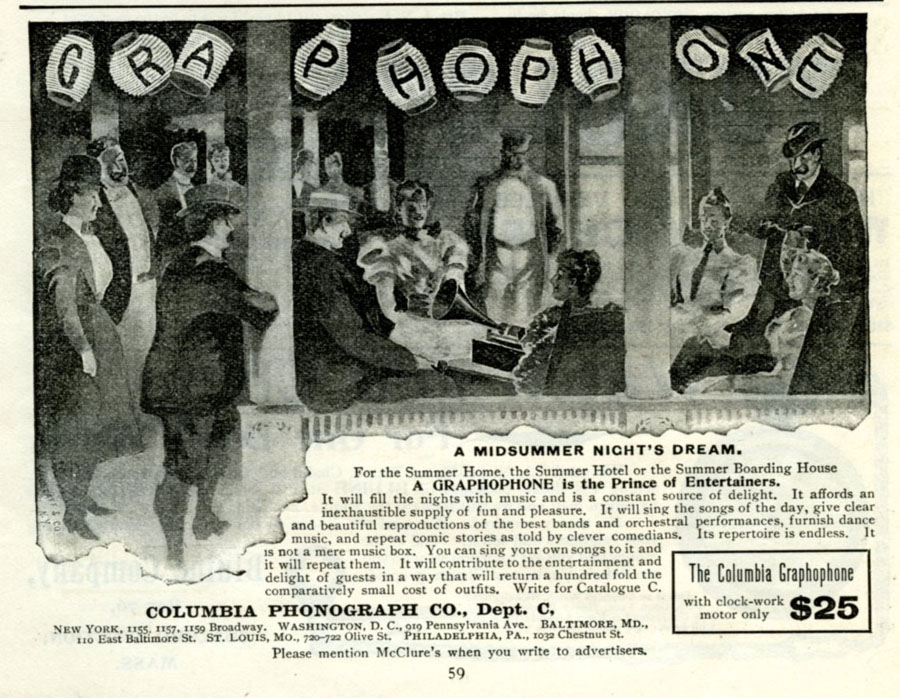
The Prince of Entertainers
- "It affords an inexhaustile supply of fun and pleasure."
McClure's, 1897
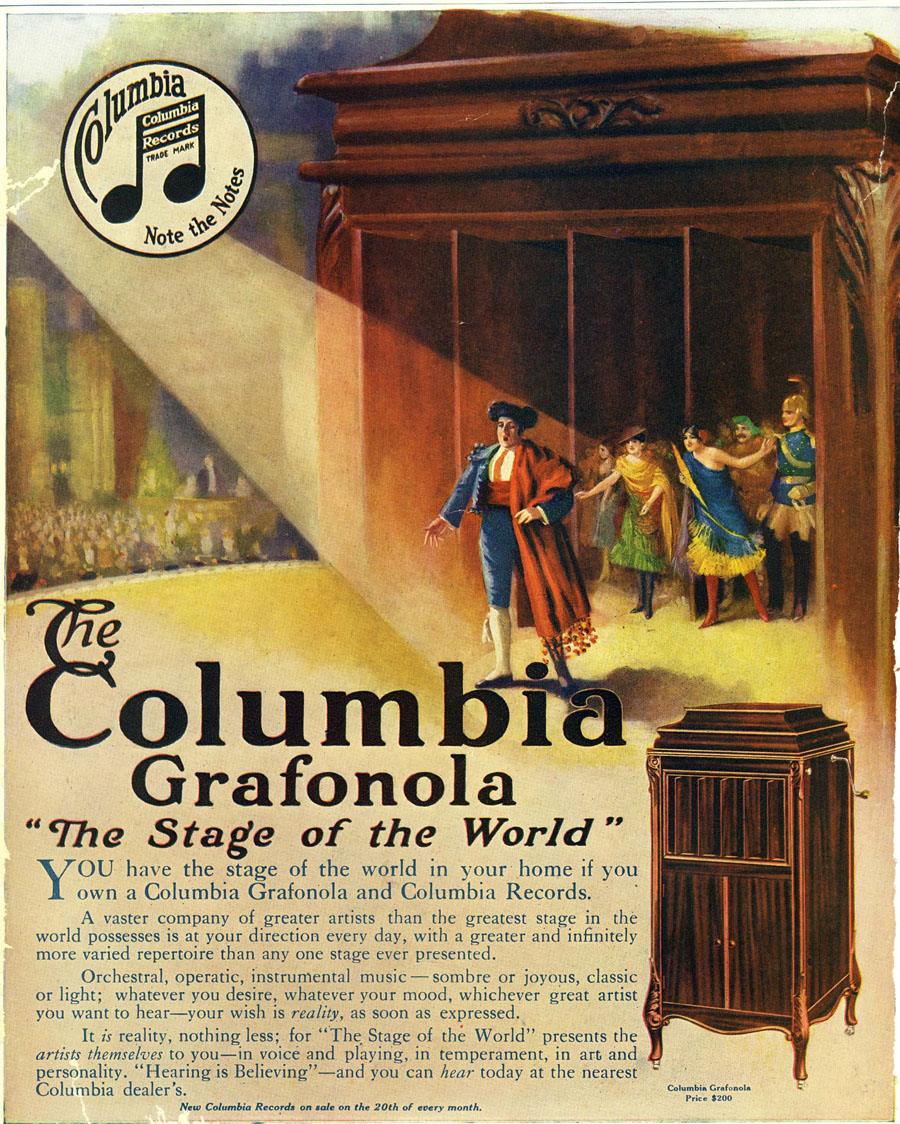
"It is reality,
nothing less; for "The Stage of the World" presents
the artists themselves to you..." Columbia Grafonola,
1916
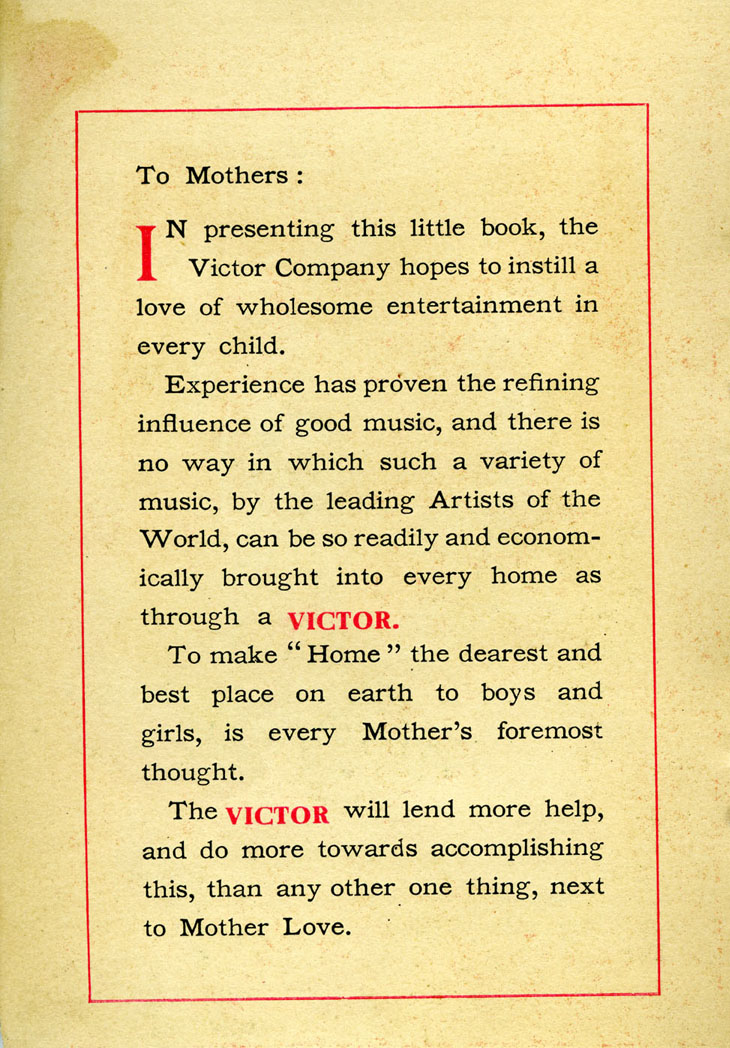
The Victor Talking Machine's promotional
brochure "The Victor for Every Day in the Week" starts by
addressing Mothers on the importance of instilling a love of wholesome
entertainment in every child. " Good music has been proven to
accomplish that goal and making "Home the dearest and
best place on earth to boys and girls." - The Victor for Every
Day In the Week, c.1906

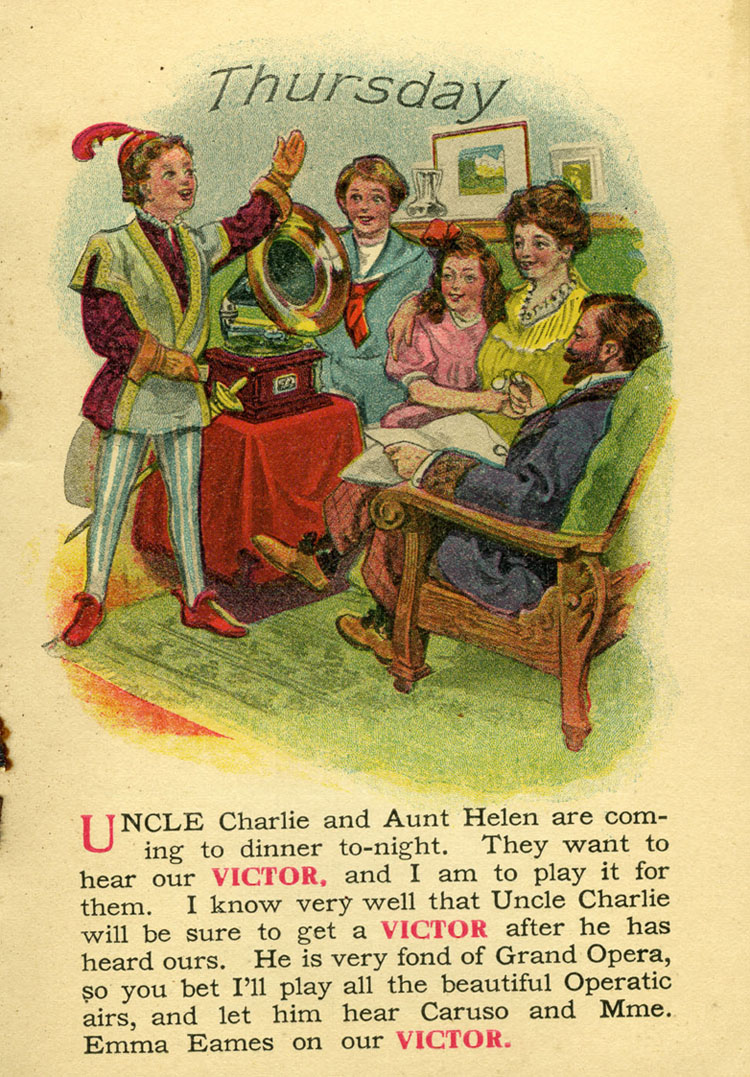
"As a musical teacher it will be
used to enable one to master a new air, the child to form its first
songs, or to sing him to sleep."
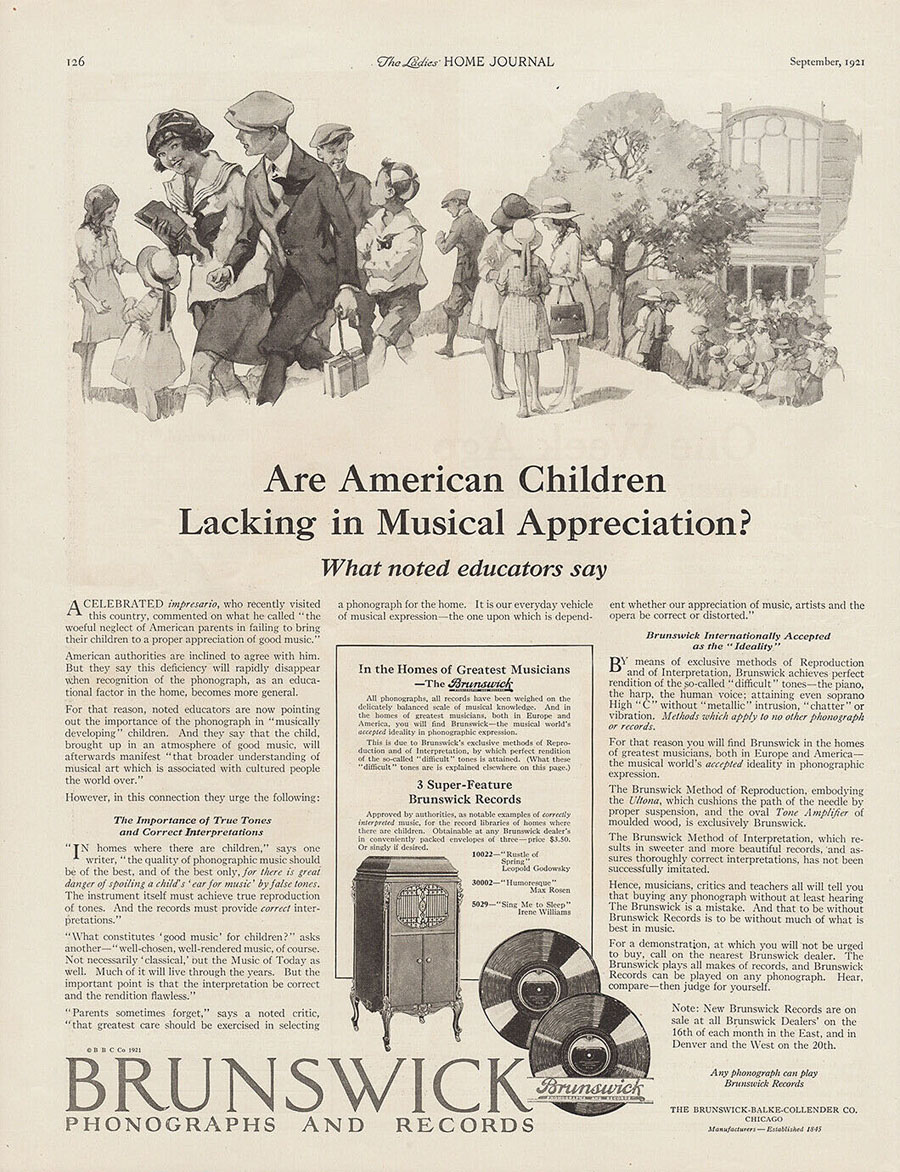
"Noted educators are
now pointing out the importance of the phonograph in "musically
developing" children."
The Ladies' Home Journal,
September 1921
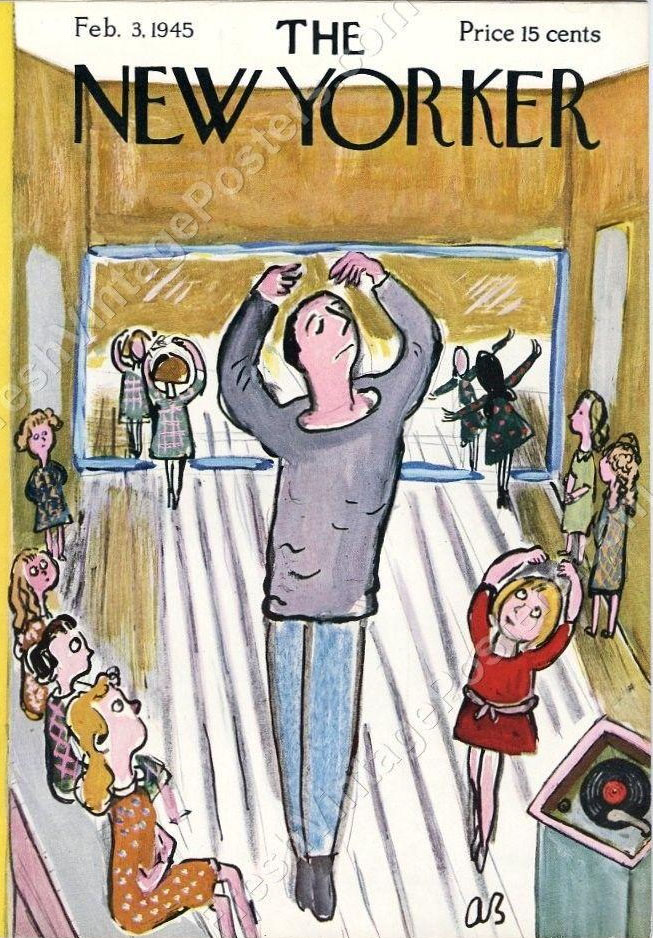
Learning ballet with help from the phonograph,
The New Yorker cover, February 3, 1945 (Courtesy Freshvintageposters.com)
.
.
For more examples of how the phonograph
was promoted and seen as the instrument that could provide the greatest
artists of music and entertainment of the world, visit Phonographia's
The
Stage of the World.
For more examples of how
the phonograph was an educator, see Edison's Phonograph and the
Future article regarding the probability of its future for "Educational
Purposes ."

Phonographia
|















